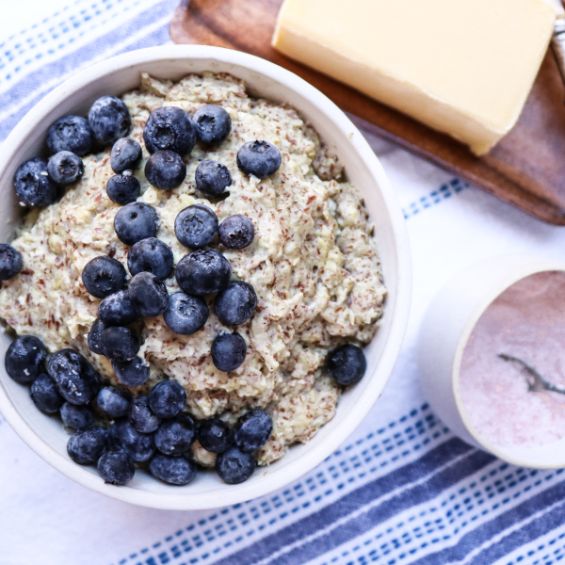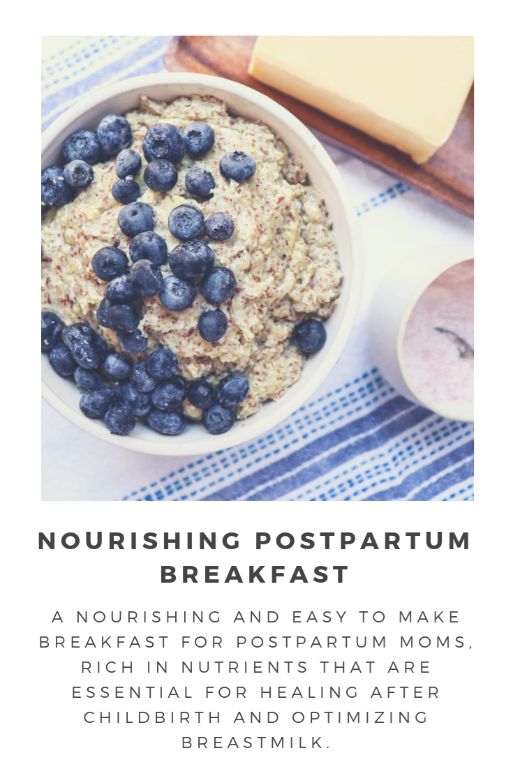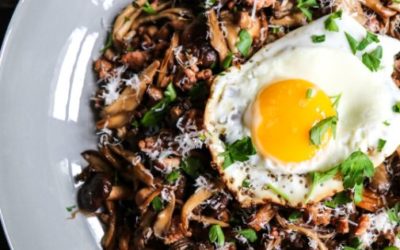The challenges of postpartum came as quite a surprise to me, and three months after giving birth I’m conditionally at a point that I assumed would be long past by now. Despite having a healthy and uneventful pregnancy and a long but natural delivery, the time following having a baby is HARD and seemingly underappreciated by the greater medical community.
Labor is likely the most strenuous athletic event of a woman’s life, and the cruel joke of the universe is that there is no recovery period! While tissue is healing, the uterus is shrinking, and the uterine lining is shedding, a new mom is lucky to get a three hour stretch of sleep and is losing valuable nutrients through breastmilk. Additionally, hormones fluctuate wildly after childbirth. Estrogen and progesterone plummet from a high during pregnancy to menopausal lows, cortisol (the stress hormone) is released in response to the new responsibilities and stressors of motherhood, appetite hormones are dysregulated due to lack of sleep, prolactin stimulates breastmilk production but also prompts the body to hold onto fat reserves and increases appetite, and oxytocin (the love hormone) is flowing to increase breastmilk, promote bonding, and make mom an emotional wreck.
Following two weeks of hormonal weepiness, for the remainder of those first 6 weeks I felt, not tired exactly, but depleted in a way that was entirely new to me. Forget fitting into my pre-pregnancy wardrobe or exercising (as I thought I would be antsy for). It became obvious that the postpartum period, whether that is 6 weeks or potentially years following delivery, should be about resting, bonding with baby, and nourishing oneself in a way that enhances energy.

Other cultures seem to appreciate postpartum far better than modern Americans. I particularly like the Chinese postpartum tradition of “sitting” for a month following childbirth. The new mom does not leave her home, is cared for by her mother or mother-in-law, eats only warm foods (cooked vegetables, rich bone broths), avoids cold (even showers!), rests, and feeds her baby. For more information, listen to this podcast episode.
Once we returned home from the hospital, I immediately felt the need for foods that were nourishing and energy dense – far from the sweet cravings I experienced throughout my pregnancy. This postpartum breakfast morphed from a simple oatmeal to something much more substantial, as I learned how to meet my needs appropriately. The recipe can be made with bone broth, as a rich and comforting meal or with water and berries for a “sweet” version (think oat and flax muffin in a bowl). And ALWAYS serve with grass-fed butter. Here are a few of the benefits, especially for breastfeeding mamas:
Oats: Anecdotally increase breastmilk production and are a good source of carbohydrates for hungry new moms.
Flax seeds: Anecdotally increase breastmilk, can help to manage constipation, and contains phytoestrogens (plant-derived estrogen-like substances), which, theoretically, could help with the symptoms of postpartum estrogen lows.
Collagen Peptides: Important nutrients for tissue repair following vaginal birth or C-section and an excellent source of protein.
Eggs: An excellent source of choline, a hard to get B vitamin-like nutrient that assists in DNA synthesis. Three eggs per day provides the choline necessary for a breastfeeding mom to nourish herself and baby.
Himalayan Sea Salt: One of my favorite ingredients, as it is rich in minerals and can assist with meeting electrolyte needs for appropriate hydration.
Grass-Fed Butter: My all-time favorite food. Milk from cows fed appropriately throughout their lives is an excellent source of nutrition. It contains butyric acid, CLA, fat soluble vitamins, and arachidonic acid, which is important for infant growth and brain development.
Before moving on to the recipe, I encourage thinking of this as a food experiment. I’ve toyed with the ratio of flax to oats, and even made an entirely grain-free version, using all flax. (If you opt for all flax, decrease water and add an extra egg.) If you’re struggling with constipation, add extra flax and make sure to drink plenty of water throughout the day. If you’re struggling with hunger throughout the day, increase the eggs, collagen peptides, and/or butter. I’m a salt monster, and typically use at least twice the amount I’ve listed in the recipe. And lastly, this can be made in the microwave or on the stovetop. I include instructions for microwave because that’s all I seem to have time for these days.
- 1/2 cup quick cooking oats (I use Bob’s Red Mill GF)
- 2 scoops collagen peptides (I use Vital Proteins)
- 1/4 cup ground flax (or more – see note above)
- 1/4 teaspoon salt (or more – see note above)
- ~1 1/4 cup water (can sub half or all for bone broth)
- 3-4 pasture raised eggs
- Grass-fed butter or ghee for topping
- Berries for topping
Stir together the oats, collagen, flax, salt, and water/bone broth in a microwave-safe bowl. Heat for about 3 minutes (cooking time will vary based on microwave strength). Once the mixture is boiling, take it out of the microwave and stir.
Crack the eggs in a separate bowl, and whisk to combine. Pour the eggs into the hot flax mixture, and whisk together. Heat in the microwave for increments of 30 seconds to 1 minute, 2-3 times, stirring well between each heating. Eventually, the mixture should be smooth, the eggs cooked through, and of an oatmeal-like consistency.
Top with plenty of butter and berries, (if opting for the “sweet” version), and enjoy!




